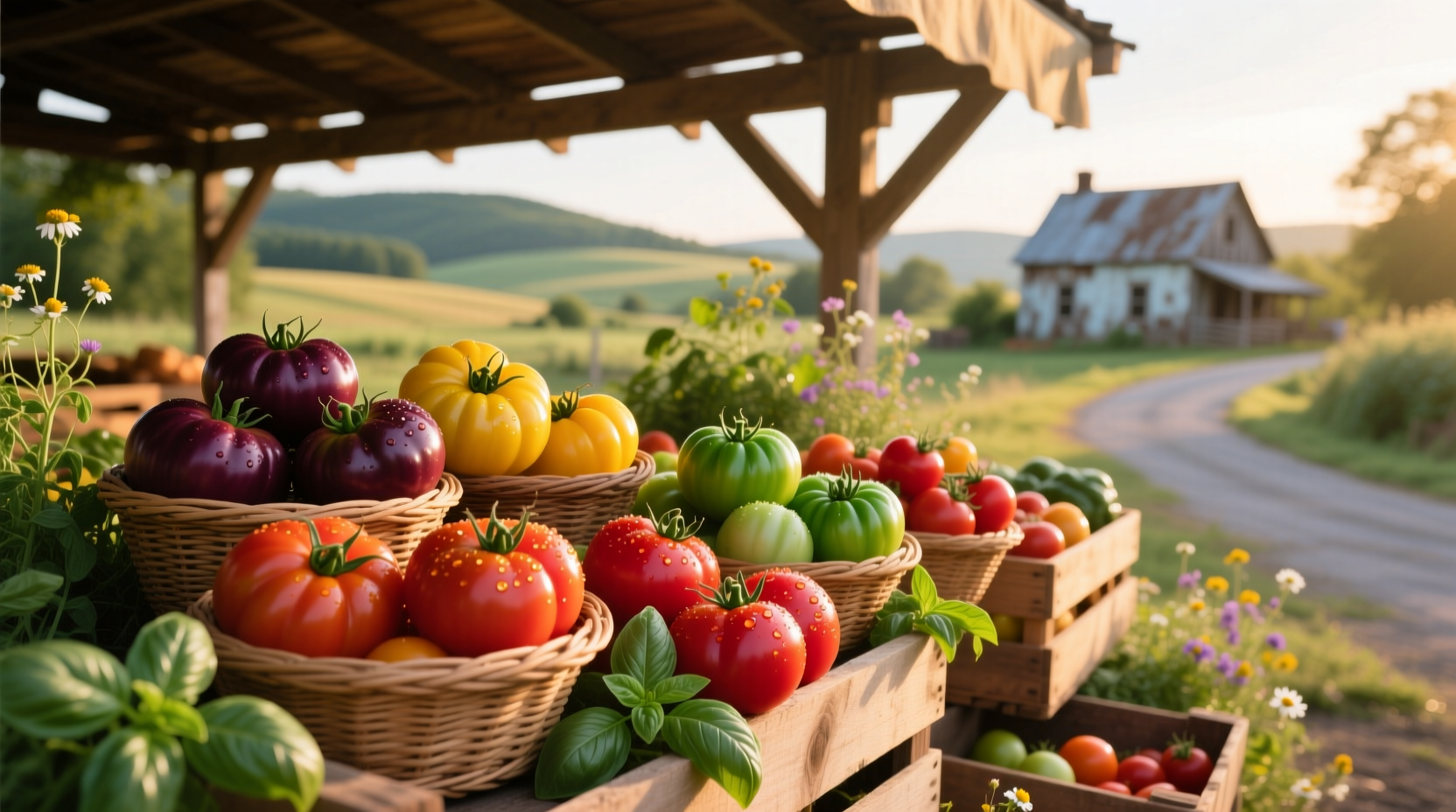When searching for the tomato shack near me, you're likely looking for a reliable source of premium tomatoes during peak season. This guide explains what to expect from authentic tomato-focused farm stands, how to identify quality operations, and how to make the most of your visit whether you're a home cook, gardener, or simply a tomato enthusiast.
What Defines a True Tomato Shack Experience
Unlike generic produce stands, genuine tomato shacks specialize in showcasing the diversity of Solanum lycopersicum. These seasonal operations typically emerge during summer months when local fields yield their peak harvest. According to the USDA's National Agricultural Statistics Service, over 33,000 farms across America grow tomatoes commercially, but only a fraction operate direct-to-consumer stands that qualify as authentic "tomato shacks."
These establishments serve as vital connections between growers and consumers, eliminating supply chain intermediaries. The University of California Agriculture and Natural Resources notes that farm stands typically sell produce within 24 hours of harvest, preserving flavor compounds that degrade rapidly after picking.

Tomato Variety Timeline: From Historical Cultivation to Modern Offerings
Understanding tomato evolution helps appreciate what quality tomato shacks offer today. This timeline reveals how cultivation practices shaped today's diverse varieties:
| Period | Development | Modern Relevance |
|---|---|---|
| 700-500 BCE | Earliest cultivation in Mesoamerica | Foundation for all modern varieties |
| 16th Century | Introduction to Europe via Spanish explorers | Development of European heirloom types |
| 19th Century | Commercial cultivation begins in North America | Standardization of common varieties |
| 1970s-Present | Heirloom revival movement | Modern tomato shacks' specialty offerings |
Identifying Quality Tomato Shacks: What to Look For
Not all roadside stands deserve the "tomato shack" designation. Authentic operations demonstrate these characteristics:
- Seasonal operation - Most legitimate tomato shacks operate only during peak harvest (June-October in most regions)
- Varietal diversity - Offering at least 5-7 distinct tomato types, including heirlooms
- Origin transparency - Clear labeling of growing location and methods
- Value-added products - House-made sauces, salsas, or preserves using their own tomatoes
- Farmer interaction - Opportunity to speak directly with growers about cultivation practices
Regional Availability Guide: When to Find Tomato Shacks
Tomato seasonality varies significantly by climate zone. The Agricultural Marketing Resource Center provides these general guidelines for the best time to visit tomato shacks in different regions:
| Region | Peak Season | Signature Varieties |
|---|---|---|
| Northeast | July-September | Brandywine, Cherokee Purple, Mortgage Lifter |
| Midwest | August-October | Amish Paste, Black Krim, Paul Robeson |
| South | May-September | Georgia Streak, Arkansas Traveler, Cherokee Green |
| West Coast | June-November | Zebra, Green Zebra, Speckled Roman |
Attempting to find the tomato shack open in winter typically leads to disappointment, as most operate seasonally. Some extend seasons with high tunnels or greenhouse varieties, but authentic operations prioritize peak-season freshness over year-round availability.
Maximizing Your Tomato Shack Visit: Practical Tips
Follow these evidence-based strategies to get the most from your visit:
Ask the Right Questions
Reputable growers welcome inquiries about their practices. Essential questions include:
- "Which varieties are ripest today?" (indicates attention to harvest timing)
- "When were these picked?" (quality operations harvest daily)
- "What's the best variety for [your intended use]?" (demonstrates grower expertise)
Storage and Usage Guidance
Unlike supermarket tomatoes, farm-fresh varieties require specific handling. The National Center for Home Food Preservation recommends:
- Store at room temperature away from direct sunlight
- Never refrigerate uncut tomatoes (destroys flavor compounds)
- Use within 3-5 days for peak flavor
- Process excess harvest into sauces when peak abundance occurs
Value-Added Products Worth Seeking
Beyond fresh tomatoes, quality tomato shacks often offer these specialty items:
- Heirloom tomato sauces - Made from specific varieties for distinct flavor profiles
- Tomato salsas - Featuring seasonal pairings with other farm produce
- Dried tomato products - Extending the harvest season
- Tomato-based condiments - Ketchups, chutneys, and relishes using unique varieties
When evaluating the tomato shack products, look for ingredient transparency. Authentic operations use only tomatoes, minimal seasonings, and clearly state preservation methods. The FDA requires proper labeling of acidification levels for safe preservation - legitimate producers will provide this information upon request.
Supporting Sustainable Tomato Production
Choosing authentic tomato shacks supports agricultural practices that benefit both consumers and the environment. According to research from the Leopold Center for Sustainable Agriculture, direct farm marketing:
- Reduces food miles by 90% compared to conventional distribution
- Preserves farmland through economic viability
- Encourages biodiversity through heirloom cultivation
- Provides growers with 3-5 times the revenue per pound compared to wholesale
When you purchase from the tomato shack near your location, you're investing in local food systems that deliver superior flavor while supporting sustainable agriculture.











 浙公网安备
33010002000092号
浙公网安备
33010002000092号 浙B2-20120091-4
浙B2-20120091-4